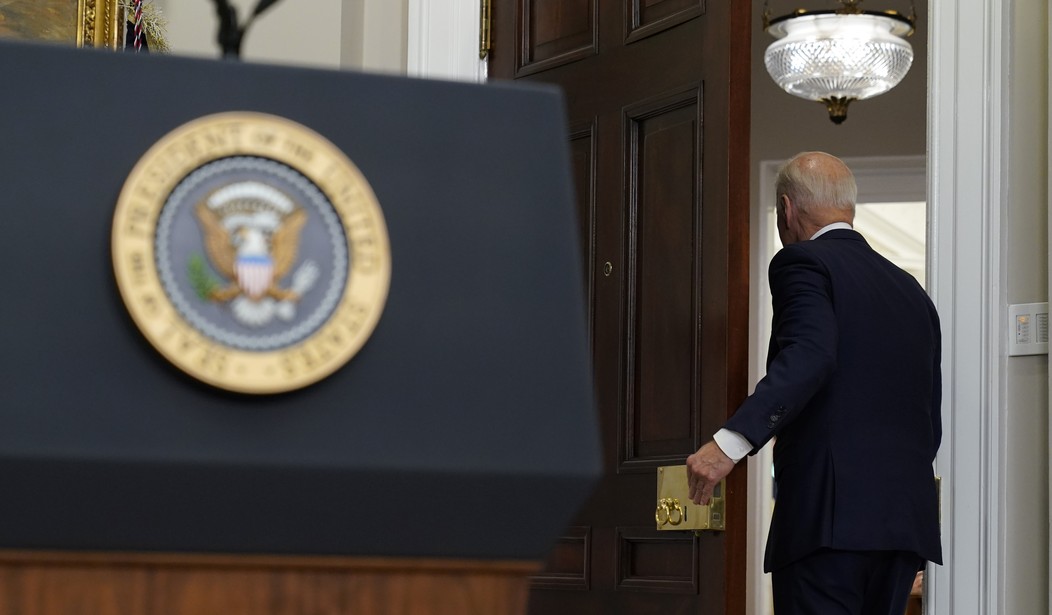On the eve of the Afghanistan withdrawal deadline, there’s so much noise from the commentariat about what led to the blunder at the Kabul airport that it’s hard to get a handle on not only the exact failure of leadership that led to tragic military and civilian deaths at the hands of a suicide bomber, but what exactly the messy withdrawal means for the future of Afghanistan.
And it’s important to get to the bottom of both of those. The former because the U.S., under Biden, may be facing three more years of foreign policy incompetence on a nearly unprecedented scale; and the latter because there are real concerns Afghanistan could become a staging ground for the growth of terror groups as in the run-up to 9/11, as Rep. Michael McCaul (R-TX), ranking member of the House Foreign Affairs Committee, has recently warned.
Unfortunately, at this point, there are only questions like the one posed by Amb. Nathan Sales, a Trump State Department undersecretary and counterterrorism expert, now affiliated with the Vandenberg Coalition, who was baffled during a press call Friday as to why Biden allowed the “resources [to determine] the mission rather than the way it’s supposed to work where the mission determines the resources.”
“The White House imposed personnel constraints and made the choice to abandon [the] Bagram [air force base],” Sales said, something Gen. Mark A. Milley, chairman of the Joint Chiefs, has alluded to but not outright confirmed.
Sales noted that the vacuum left by America’s departure – and the last flights out were still taking place early Monday morning Eastern time– could lead to a “hostage situation that makes Iran in 1979 look like a picnic.”
Adding to those failures, there are new reports the Taliban offered to stay clear of Kabul but the Biden administration turned them down indicating the U.S. only needed access to the Hamid Karzai International Airport.
Recommended
“The incompetence is stunning,” wrote former George W. Bush administration speechwriter Marc Thiessen on Twitter.
The questions about leadership failure, murky and ever-changing though they are, may be the low-hanging policy fruit most easy to criticize under the circumstances because it’s even more difficult to determine exactly what is happening in Afghanistan now that the U.S. has clumsily withdrawn troops and American citizens seem poised to be left behind.
A graphic has been floating around showing the extraordinary amount of military equipment abandoned that will surely, at least to some degree, end up in the Taliban’s hands. Victor Davis Hanson takes an inventory of that equipment in a new piece at American Greatness:
Estimates of the trove’s value range from $70 billion to $90 billion. The stockpile likely includes 80,000 vehicles, including 4,700 late-model Humvees, 600,000 weapons of various sorts, 162,643 pieces of communications equipment, more than 200 aircraft, and 16,000 pieces of intelligence, surveillance, and reconnaissance equipment, including late-model drones. Especially worrisome are the loss of night-vision equipment, 20,000-plus grenades, and 1,400 grenade launchers, as well as more than 7,000 machine guns—the perfect equipment for jihadist terror operations and asymmetrical street fighting.
There’s at least some hope that a portion of that equipment went with the U.S.-backed Afghan government and Afghan Security forces after their almost-immediate abandonment of post in the face of an empowered Taliban – something experts on both sides of the political aisle say is the fault of the Trump administration as well as the Biden administration thanks to Trump’s Doha Deal.
But Biden had the choice and the right to leave the deal, and ultimately decided against it. The aftermath of that fateful decision now potentially sets the region up for war between the Taliban, the very mysterious ISIS-K, and the in-hiding Afghan government forces, all using American war machines. And that’s not even mentioning what China and/or Russia have in mind regarding the region.
So perhaps the biggest question as the U.S. makes good on something the war-weary American people overwhelmingly favored is this: how does the de facto funding of a potential tribal war in Afghanistan on our way out the door meet American geopolitical interests? And was it worth the loss of American lives and the abandonment of American citizens to brutal combatants?
It seems unlikely the answer to either of those questions will ever be satisfying.























Join the conversation as a VIP Member